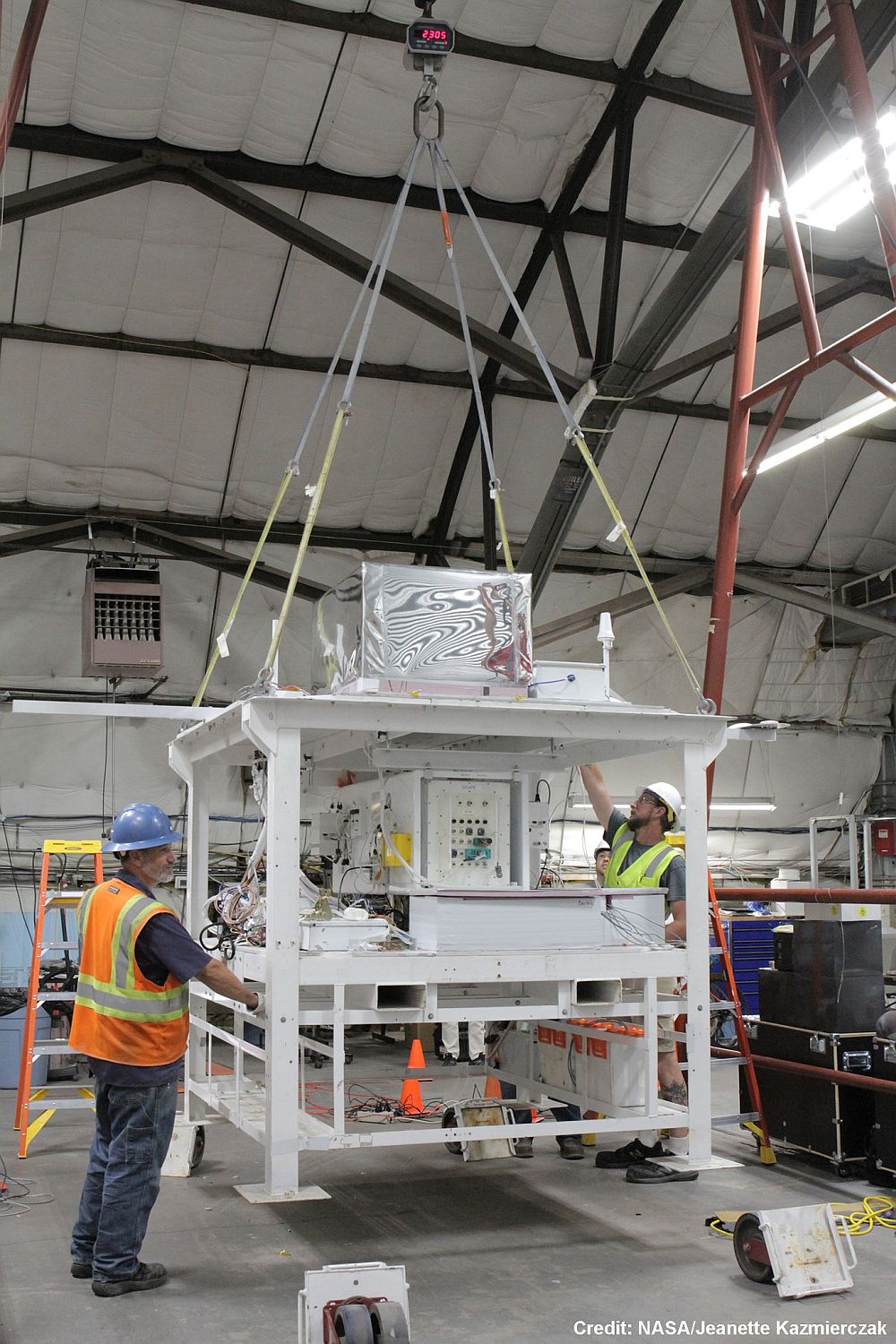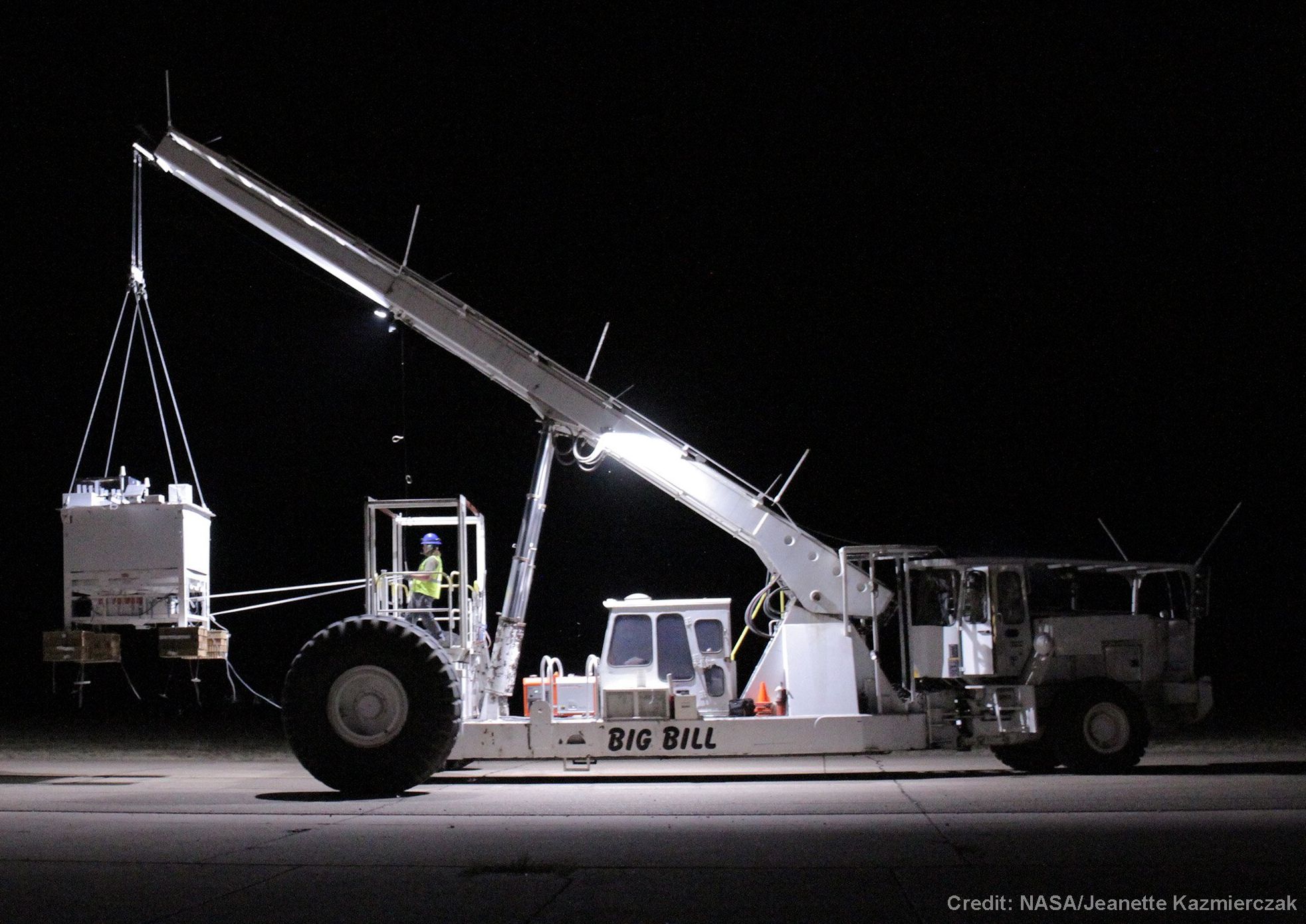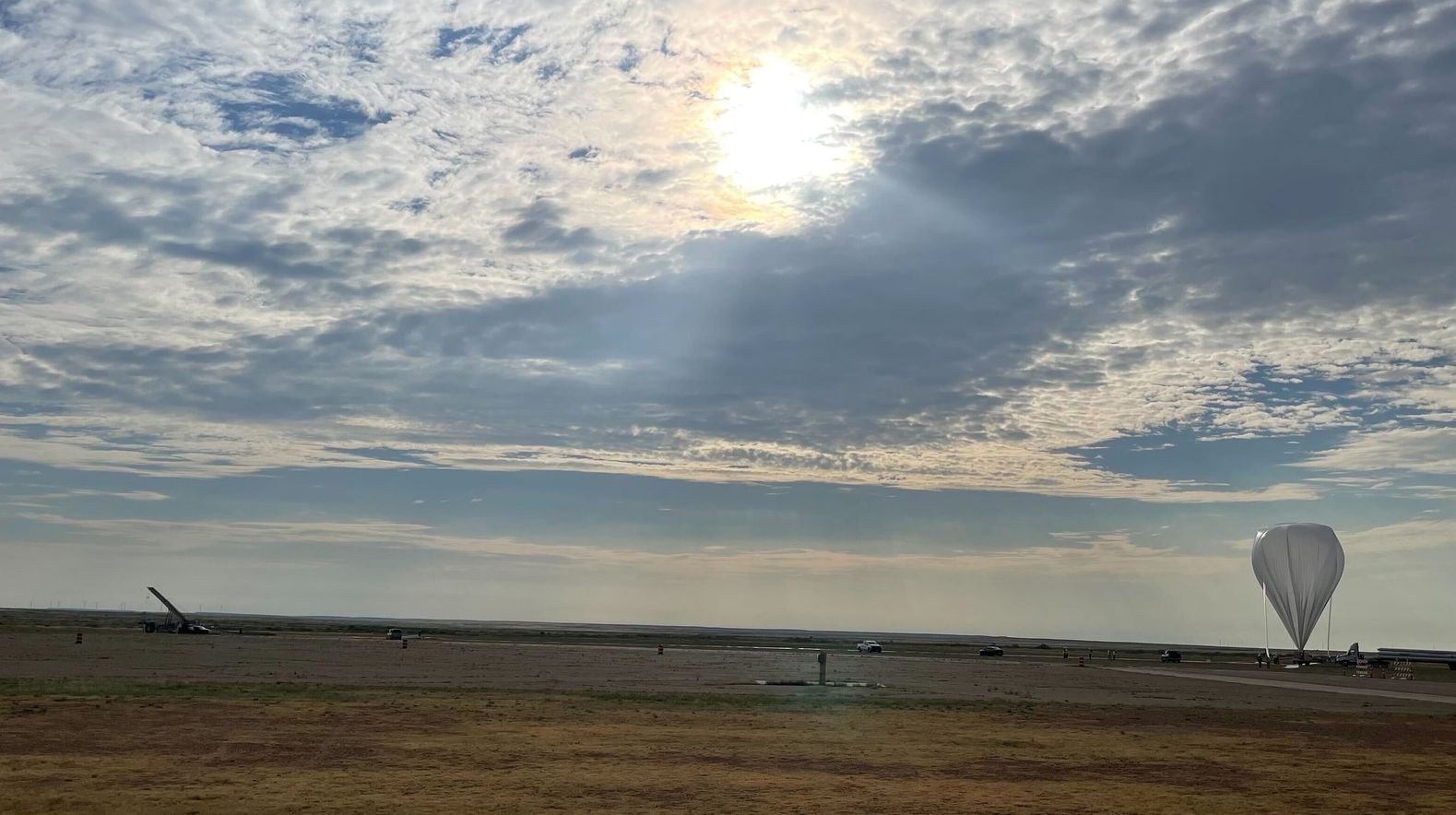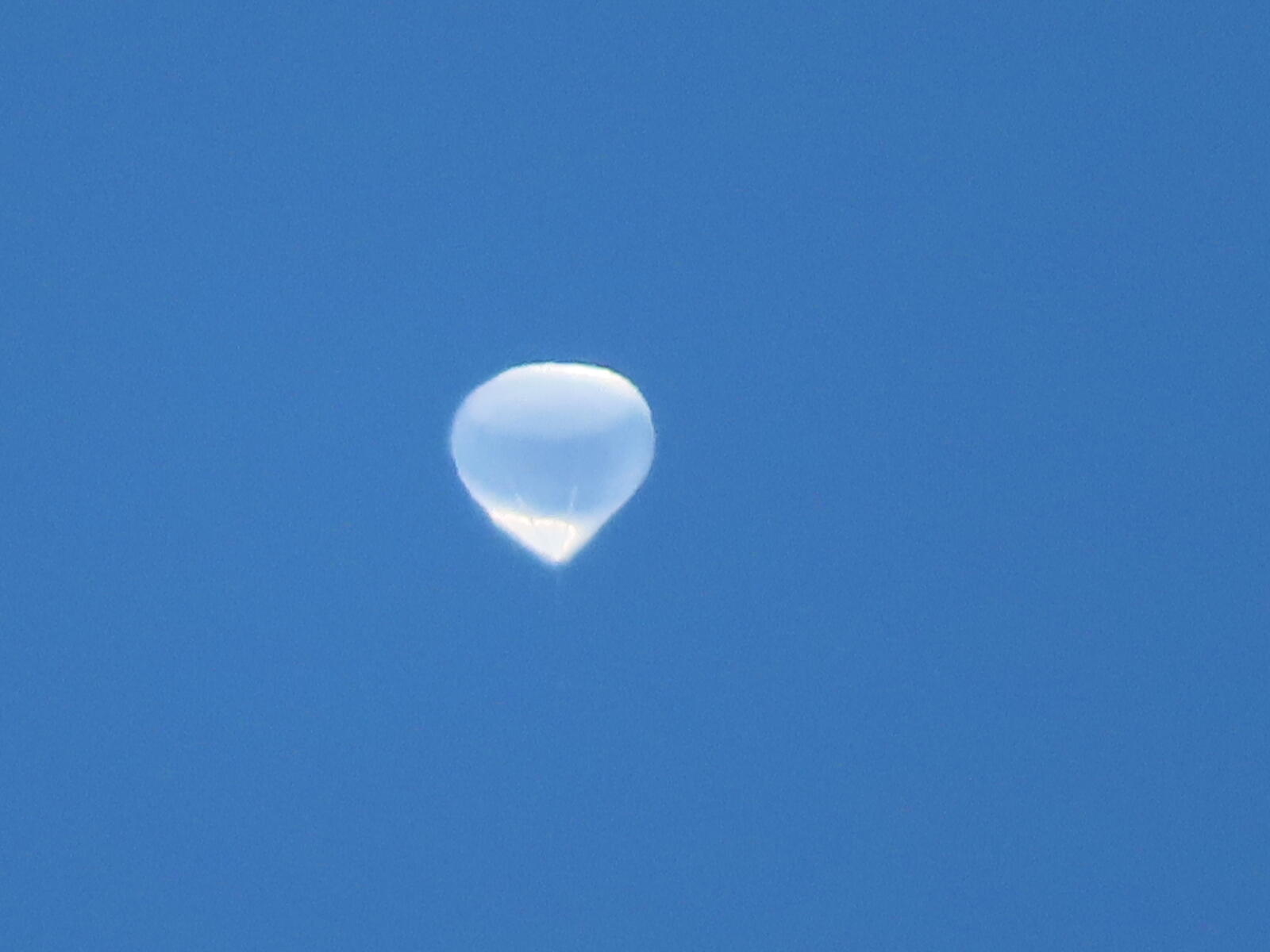Purpose of the flight and payload description
The primary instrument on board this flight was GRAPE or Gamma-Ray Polarimeter Experiment a high-altitude balloon experiment designed to measure Gamma-Ray Bursts (GRBs) polarization over the energy range of 50-500 keV at flight altitudes. The experiment is the newest iteration of the original experiment developed at the University of New Hampshire in middle 2000s.
The new design is based on an arrangement of small scintillation detector elements designed to measure photon interactions in three dimensions and provide modest imaging capabilities. The flight instrument consisted of a 3-dimensional array of high-Z and low-Z scintillators each read out by individual Hamamtsu MultiPixel Photon Counters. Previous GRAPE missions have been sensitive to M-class solar flares and observations of the Crab Nebula with low signal to background ratios. The new design improves performance relative to the previous GRAPE design through the use of advanced scintillator materials, the ability to perform modest Compton imaging for source localization and background rejection, and by completely eliminating optical cross-talk. Background reduction is achieved using the imaging capabilities allowing for some level of event rejection for events inconsistent with the source direction.
Goal of GRAPE is to aid in understanding the underlying physics governing astrophysical jets associated with GRBs which is necessary to advance the field of gamma-ray astronomy.
A secondary payload onboard was ComPair or Compton Pair a prototype of a telescope that aims to develop the necessary technologies for future medium energy gamma-ray missions developed by a collaboration between NASA's Goddard Space Flight Cenbter, the Naval Research Laboratory, the Brookhaven National Laboratory, and Los Alamos National Laboratory. ComPair consisted of 4 detector subsystems: a tracker containing 10 layers of silicon detectors that determines the positions of incoming gamma rays, a high-resolution Frisch-grid cadmium zinc telluride calorimeter that precisely measures lower-energy Compton-scattered gamma rays, another high-energy hodoscopic cesium iodide calorimeter that measures the higher-energies of electron-positron pairs all of which were surrounded by a plastic scintillator anti-coincidence detector that notes the entry of high-energy charged particles called cosmic rays, allowing ComPair's other sub-systems to ignore them.
These subsystems together detect and characterize photons via Compton scattering and pair production, enabling a veto of incident cosmic rays. The prototype will serve as a proof-of-concept for a space telescope with the same architecture.
Both payloads were mounted in a square frame gondola as we can see in the scheme at left.
Details of the balloon flight
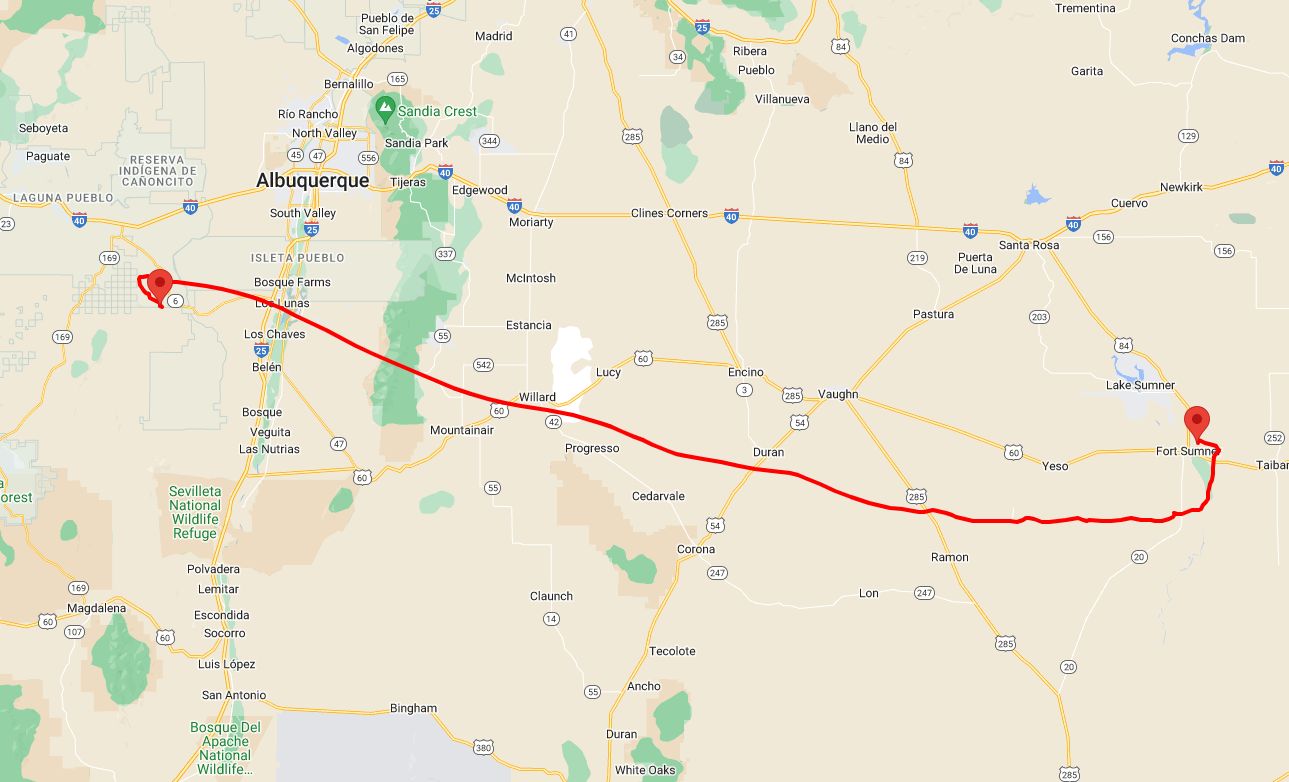
Balloon launched on: 8/27/2023 at 14:58 utc
Launch site: Scientific Flight Balloon Facility, Fort Sumner, (NM), US
Balloon launched by: Columbia Scientific Balloon Facility (CSBF)
Balloon manufacturer/size/composition: Zero Pressure Balloon Aerostar - W39.57-2-113 - 39.570.000 cuft
Flight identification number: 731N
End of flight (L for landing time, W for last contact, otherwise termination time): 8/27/2023 at 21:30 utc
Balloon flight duration (F: time at float only, otherwise total flight time in d:days / h:hours or m:minutes - ): 6 h 30 m
Landing site: SW of Albuquerque, New Mexico, US
External references
- Development of a CsI Calorimeter for the Compton-Pair (ComPair) Balloon-Borne Gamma-Ray Telescope IEEE Transactions on Nuclear Science, vol. 70, issue 10, pp. 2329
- NASA Scientific Balloons Take to the Sky in New Mexico NASA website
- NASA's ComPair balloon mission readies for flight Phys.Org
- The Compton-Pair telescope: A prototype for a next-generation MeV Gamma-ray observatory Proceedings for the 38th International Cosmic Ray Conference (ICRC2023)
16337If you consider this website interesting or useful, you can help me to keep it up and running with a small donation to cover the operational costs. Just the equivalent of the price of a cup of coffee helps a lot.


